As per the chefs of the famous Best Indian Restaurant in Wollongong , “ The Indian cuisine is so diversified, that it offers every member of a family to have something to choose as his or her favorite.” As far as we are talking about the wider scope of the variations, then we can take the North Indian and South Indian Cuisine into account. The comparison of the food items can be done merely by taking these two regions into account. In today’s article, we are going to talk about such contrasts and the variations which the master chefs practising in the Indian restaurant in Sydney have noticed about Indian food.
So let us begin with our today’s blog:
Wheat or Rice
In north India, we shall be finding the majority of staple food items made up of wheat. Like North Indian people highly acclaimed the naan, parathas, rotis and the puris which are made up of wheat.
While people native to the Southern region take rice and the item made of rice as their staple dietary elements.
Spices
If the basic ingredients like wheat and rice are found to be diversified, then how can we not expect variations in the case of the spices. On a whole, we can say that southern food items are greatly rich in spice content as compared to the northern food items.
Texture
The dishes which are made in the Northern region are always found to be creamier and heavier as compared to that of the South-Indian recipes.
For example, North Indian food items like Daal Makhni, Palak-Paneer, Kadai Paneer and Sarson-Ka-Saag are not only extremely luscious and creamy but heavier as well. The south Indian recipe to make sambar is so light that it does not make you feel like you have eaten something heavy.
Sauces
From the texture of the dishes themselves, we can guess what the consistency of the sauces will be. When it is thicker in northern food, it is slightly thin in the southern recipes.
Factual Concept
- The north Indian people like to relish the thicker sauces with the bread, The thickness is supposed to make the bread-bites soggy and chewable.
- As rice is a staple in the South, the soups and the lentils have a thinner consistency, which helps the rice to adapt to the maximum flavour.
Influences
Nevertheless, ingredients, sauces, textures and the consistency of the Indian meals are different, then how can we expect the influencers not to be different.
- The Arabs and the Persians have produced a considerable effect on North Indian Cuisine.
- South Indian cuisine is thoroughly dominated by Dravidians.
Customary ingredients
- The use of the following is sure in every North-Indian Recipe:
- Yoghurt
- Onion
- Tomatoes
- Garlic
- While in the south-India, the subsequent ingredients are prominently used:
- Coconut
- Native Fruits
- Curry Leaves
- Coconut Oil
- Coconut Milk
Final Comments!
Both the northern and southern Indian cuisine is distinctive in their ways. This is the main reason that the northern people admire Idli, Sambar, Dosa nad Vada while southern people are great fans of the Shahi Paneer, Daal Makhni and Chole-Bhature.

